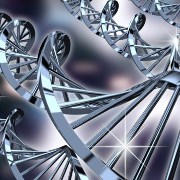 Photo: Getty Images
Photo: Getty Images
Since the 1990s there has been a worldwide explosion in cases of autism. Once a rare neurological disorder that affected only one in 10,000 children, and often from birth, it is now affecting as many as one in 66. Many cases are regressive, where the child is born normally and develops appropriately for his age, then loses previously acquired skills including his language.
Boys are three times more likely to get autism compared with girls. A Cambridge University study in the UK found that one in 40 British boys is autistic or has some form of ASD.
But what causes autism? That has been a question that has been asked since 1943 and scientists aren’t completely sure. In truth, autism is probably caused by a combination of factors.
Helen V. Ratajczak, researcher in the Journal of Immunotoxicology, wrote:
"Documented causes of autism include genetic mutations and/or deletions, viral infections, and encephalitis following vaccination. Therefore, autism is the result of genetic defects and/or inflammation of the brain." (1)
Theoretical causes of autism that researchers have studied so far, include:
Genetic Faults
Some cases of autism are believed to be genetic in origin. Studies of identical twins have shown that if one twin is autistic, the other twin is 90 percent likely to have autism too. Relatives of autistic individuals may have one or more symptoms associated with autism but not enough to be diagnosed with the condition. (1)
Identical twins have the same DNA, though, so they may be susceptible to the same environmental factors and this could account for the high rate of sibling autism.
Other theory is that alterations in gene expression or mutations in genes could be responsible for autism, although no gene has been found to be responsible for autism and some researchers think that genetics do not account for autism because there has been an epidemic increase in cases throughout the world and there is no such thing as a genetic epidemic. (1)
The CDC admitted that genetics cannot account for the increase in cases and many studies of the issue have strengthened this position. (2) The Journal of Epidemiology suggested that the increase in cases was not due to genetics or over-reporting and that chemicals and infectious microbes were a likely cause of the changes in the neurological development of children.
"It's time to start looking for the environmental culprits responsible for the remarkable increase in the rate of autism in California," said UC Davis M.I.N.D. Institute researcher, Irva Hertz-Picciotto. (3)
Metal Metabolism Disorders
Various studies have found that autistic individuals have high levels of mercury and other metals in their blood and urine. A study in 2001 showed that 85 percent of autistic people tested showed elevated levels of metals and 99 percent showed evidence of a metal metabolism disorder. (1)
A study in the International Journal of Toxicology found that autistic infants had reduced levels of mercury in their hair, showing that they had not been able to excrete it as effectively as infants who were neurologically normal.
"Differential rates of postnatal mercury elimination may explain why similar gestational and infant exposures produce variable neurological effects ... The mothers in the autistic group had significantly higher levels of mercury exposure through Rho D immunoglobulin injections and amalgam fillings number of the mothers' amalgam fillings and their fish consumption as well as exposure to mercury through childhood vaccines, correlations that were absent in the autistic group."
So the neurologically normal babies who had been exposed to mercury in the womb via their mother’s fillings or anti-D injections, and after birth in the form of vaccines, had a higher level of mercury showing in their hair. Autistic babies exposed to the same things did not show this same level of mercury because they hadn’t excreted it from their bodies. (4)
Sources:
1. Theoretical aspects of autism: Causes—A review, Journal of Immunotoxicology. Web. 8 September 2011.
http://www.cogforlife.org/ratajczakstudy.pdf
2. Prevalence of Autism Spectrum Disorders --- Autism and Developmental Disabilities Monitoring Network, United States, 2006, MMWR, CDC. Web. 4 September 2011.
http://www.cdc.gov/mmwr/preview/mmwrhtml/ss5810a1.htm
3. Study shows California's autism increase not due to better counting, diagnosis, Physorg. Web. 8 September 2011. http://www.physorg.com/news150636855.html
4. Reduced levels of mercury in first baby haircuts of autistic children, International Journal of Toxicology. Web. 8 September 2011. http://www.ncbi.nlm.nih.gov/pubmed/12933322
Joanna is a freelance health writer for The Mother magazine and Suite 101 with a column on infertility, http://infertility.suite101.com/. She is author of the book, 'Breast Milk: A Natural Immunisation,' and co-author of an educational resource on disabled parenting.
She is a mother of five who practised drug-free home birth, delayed cord clamping, full term breast feeding, co-sleeping, home schooling and flexi schooling and is an advocate of raising children on organic food.
Reviewed September 8, 2011
by Michele Blacksberg R.N.
Edited by Jody Smith






Add a Comment11 Comments
Citation # 4 is actually:
Holmes AS, Blaxill MF, Haley BE. (2003) Reduced levels of mercury in first baby haircuts of autistic children. Int J Toxicol. 2003 Jul-Aug;22(4):277-85.
Joanna uses this citation to make the argument:
"A study in the International Journal of Toxicology found that autistic infants had reduced levels of mercury in their hair, showing that they had not been able to excrete it as effectively as infants who were neurologically normal.
"Differential rates of postnatal mercury elimination may explain why similar gestational and infant exposures produce variable neurological effects ... The mothers in the autistic group had significantly higher levels of mercury exposure through Rho D immunoglobulin injections and amalgam fillings number of the mothers' amalgam fillings and their fish consumption as well as exposure to mercury through childhood vaccines, correlations that were absent in the autistic group."
So the neurologically normal babies who had been exposed to mercury in the womb via their mother’s fillings or anti-D injections, and after birth in the form of vaccines, had a higher level of mercury showing in their hair. Autistic babies exposed to the same things did not show this same level of mercury because they hadn’t excreted it from their bodies. (4)"
Holmes et al. (2003) is one of the weakest of the weak reeds advanced for the argument "mercury exposure causes autism".
The most complete analysis of the flaws in Holmes et al. (2003) was written in 2005 by Prometheus, an academic biological scientist who blogs pseudonymously at Photon in the Darkness.
http://photoninthedarkness.com/?p=12
http://photoninthedarkness.com/?p=16
http://photoninthedarkness.com/?p=17
The first flaw in the study is the authors' acceptance of the idea of "excretion into the hair". It doesn't happen. Blood mercury = hair mercury. The second flaw is the data collection methods (the hair used in the study). "The hair samples had been in storage under unknown conditions for a median of five and a half years." Does hair change over time? Yes it does. The third flaw is that the study found that the autistic children had lower hair mercury levels than the neurotypical controls. Rather than accepting that data, the authors went on to spin "tooth fairy tales" to explain why that might be so (the idea that autistic children had impaired mercury excretion). The fourth flaw in the study involves the hair analyzed: the samples had been in storage under unknown conditions for a median of five and a half years.
Do I really need to go on why Holmes et al. is a broken reed? Why Joanna should not have used this study to advance her notion that "metal metabolism disorders" are causal in autism?
I don't think so. It was, when published, a footling study. Holmes et al. 2003 isn't even a weak reed -- it's an over-cooked noodle.
Joanne, by citing the study, revealed her lack of competence as a science writer. EmpowHer readers and members deserve much better than this.
But wait: One more thing you should know: Holmes et al. 2003 authors' affiliations are given as Safeminds. Safeminds is an acronym for Sensible Action For Ending Mercury Induced Neurological Disorders. Do you think the authors had an ideological point to make?
September 11, 2011 - 9:49pmThis Comment
Citation # 4 is actually:
Holmes AS, Blaxill MF, Haley BE. (2003) Reduced levels of mercury in first baby haircuts of autistic children. Int J Toxicol. 2003 Jul-Aug;22(4):277-85.
Joanna uses this citation to make the argument:
"A study in the International Journal of Toxicology found that autistic infants had reduced levels of mercury in their hair, showing that they had not been able to excrete it as effectively as infants who were neurologically normal.
"Differential rates of postnatal mercury elimination may explain why similar gestational and infant exposures produce variable neurological effects ... The mothers in the autistic group had significantly higher levels of mercury exposure through Rho D immunoglobulin injections and amalgam fillings number of the mothers' amalgam fillings and their fish consumption as well as exposure to mercury through childhood vaccines, correlations that were absent in the autistic group."
So the neurologically normal babies who had been exposed to mercury in the womb via their mother’s fillings or anti-D injections, and after birth in the form of vaccines, had a higher level of mercury showing in their hair. Autistic babies exposed to the same things did not show this same level of mercury because they hadn’t excreted it from their bodies. (4)"
Holmes et al. (2003) is one of the weakest of the weak reeds advanced for the argument "mercury exposure causes autism".
The most complete analysis of the flaws in Holmes et al. (2003) was written in 2005 by Prometheus, an academic biological scientist who blogs pseudonymously at Photon in the Darkness.
http://photoninthedarkness.com/?p=12
http://photoninthedarkness.com/?p=16
http://photoninthedarkness.com/?p=17
The first flaw in the study is the authors' acceptance of the idea of "excretion into the hair". It doesn't happen. Blood mercury = hair mercury. The second flaw is the data collection methods (the hair used in the study). "The hair samples had been in storage under unknown conditions for a median of five and a half years." Does hair change over time? Yes it does. The third flaw is that the study found that the autistic children had lower hair mercury levels than the neurotypical controls. Rather than accepting that data, the authors went on to spin "tooth fairy tales" to explain why that might be so (the idea that autistic children had impaired mercury excretion). The fourth flaw in the study involves the hair analyzed: the samples had been in storage under unknown conditions for a median of five and a half years.
Do I really need to go on why Holmes et al. is a broken reed? Why Joanna should not have used this study to advance her notion that "metal metabolism disorders" are causal in autism?
I don't think so. It was, when published, a footling study. Holmes et al. 2003 isn't even a weak reed -- it's an over-cooked noodle.
Joanne, by citing the study, revealed her lack of competence as a science writer. EmpowHer readers and members deserve much better than this.
But wait: One more thing you should know: Holmes et al. 2003 authors' affiliations are given as Safeminds. Safeminds is an acronym for Sensible Action For Ending Mercury Induced Neurological Disorders. Do you think the authors had an ideological point to make?
September 11, 2011 - 6:54pmThis Comment
Perhaps their point was the same as all the studies funded by vaccine companies, but I notice you don't say anything about that?
September 12, 2011 - 2:40amThis Comment
Any discussion of an autism epidemic should take account of Wing (1993) The Definition and Prevalence of Autism: A Review. European Child and Adolescent Psychiatry, Vol.2, Issue 2, April 1993, pp.61-74. It is available online with permission from the publishers. http://www.mugsy.org/wing.htm
Wing discusses a number of factors that might explain the differences in prevalence across the sixteen studies she examines. Case finding was one difference. Studies that relied on psychiatric records to identify cases produced the lowest rates. Studies where the entire population including normally developing children were screened produced the highest results. Diagnostic criteria mattered as well. Early studies used a lack of social interaction. Later studies referred too impairment rather than absence. Wing herself illustrates this factor in the Camberwell Study (J Wing L, Gould J.
Severe impairments of social interaction and associated abnormalities in children: epidemiology and classification.Autism Dev Disord. 1979 Mar;9(1):11-29.) Using strict criteria from Lotter's original epidemiological study they found a similar rate of 4-5 in 10000. When they included children who also identified a larger group of children (about 15 per 10,000) who had impairments of social interaction,
communication and imagination (which they referred to as
the 'triad' of impairments), together with a repetitive stereotyped pattern of activities. Although these children did not fit into the full picture of early childhood autism (or typical autism) as described by Kanner they were identified as being within the broader 'autistic spectrum'.
So, in the UK in children with an IQ less than 70 we had a rate of 1 in 500 in 1979 for autistic spectrum disorder. The only study that ever found anything approaching 1 in 10000 was in North Dakota (Burd, L., Fisher, W. & Kerbeshian, J. (1987). A prevalance study of pervasive developmental disorders in North Dakota Journal of the American Academy of Child and Adolescent Psychiatry, 26, 704-710. ) They used the highly restrictive DSM III criteria and found 1.2 in 10000 for infantile autism. But their overall figure, including childhood onset (after 30 months) and Atypical Pervasive Developmental Disorder, was 3.3 in 10000.
When you include children of normal intelligence being educated in mainstream schools, so called high functioning and Asperger types, the combined figure for prevalence is around 1 in 100. That is not to say there has been no increase. There may well have been. Existing studies cannot settle that question. But there is a paucity evidence for a massive increase and talk of an epidemic has no justification at all.
Mike Stanton
September 11, 2011 - 3:33pmThis Comment
Sorry the cut and paste got garbled. "When they included children who also identified a larger group of children (about 15 per 10,000) who had impairments of social interaction,communication and imagination (which they referred to as the 'triad' of impairments), together with a repetitive stereotyped pattern of activities. " should read as follows.
"They also identified a larger group of children (about 15 per 10,000) who had impairments of social interaction, communication and imagination (which they referred to as the 'triad' of impairments), together with a repetitive stereotyped pattern of activities."
September 11, 2011 - 4:33pmThis Comment
Joanna wrote,
"The Journal of Epidemiology suggested that the increase in cases was not due to genetics or over-reporting and that chemicals and infectious microbes were a likely cause of the changes in the neurological development of children.
"It's time to start looking for the environmental culprits responsible for the remarkable increase in the rate of autism in California," said UC Davis M.I.N.D. Institute researcher, Irva Hertz-Picciotto. (3)"
Citation 3 is:
Study shows California's autism increase not due to better counting, diagnosis, Physorg. Web. 8 September 2011. http://www.physorg.com/news150636855.html
The citation is to just one publication of a press release from the MIND institute. Evidently Joanna couldn't be bothered to look up or cite the actual study:
Hertz-Picciotto I, Delwiche L. (2009) The rise in autism and the role of age at diagnosis. Epidemiology. 2009 Jan;20(1):84-90. doi: 10.1097/EDE.0b013e3181902d15
What the paper actually said:
"Autism incidence in California shows no sign yet of plateauing. Younger ages at diagnosis, differential migration, changes in diagnostic criteria, and inclusion of milder cases do not fully explain the observed increases. Other artifacts have yet to be quantified, and as a result, the extent to which the continued rise represents a true increase in the occurrence of autism remains unclear."
So there was a contradiction between the paper's findings and what Dr. Hertz-Picciotto said in the press release. Which should be given more credence? Or is it possible that in the press release, Dr Hertz-Picciotto was, well, exaggerating?
As one autism parent wrote,
http://autismnaturalvariation.blogspot.com/2009/11/word-about-hertz-picciotto-delwiche.html
"This is completely at odds with the conclusions of the paper, and I find it quite dishonest. To make it perfectly clear, yes, I'm accusing Dr. Hertz-Picciotto of intellectual dishonesty."....
He went on to write of the study's other shortcomings:
"In other words, the MIND Institute study is not even informative about the impact of the artifacts it did take into account. I frankly can't see this study as a contribution to scientific knowledge at all. It gives the appearance of being part of a propaganda effort. "
The neurologist Steven Novella MD wrote, in his review of Hertz-Picciotto I, Delwiche L. (2009)
"This latest study is interesting, but was too limited in scope to significantly alter the evidence as a whole. I would not be surprised if some portion of the increase in autism diagnoses were due to environmental factors. But I don’t think current evidence lends much support to this notion either. The current state of evidence strongly suggests that the dominant reason for the increase in numbers is due to changes in diagnostic behavior."
So Joanna made a claim that for autism causation being due to "chemicals and infectious microbes ". Did the paper she cited mention these elements? No, not at all.
Did the press release? Yes -- in the context of two ongoing studies for which Hertz-Picciotto is the principal investigator.
"Hertz-Picciotto is the principal investigator on the CHARGE (Childhood Autism Risk from Genetics and the Environment) and MARBLES (Markers of Autism Risk in Babies-Learning Early Signs) studies.
CHARGE is the largest epidemiologic study of reliably confirmed cases of autism to date, and the first major investigation of environmental factors and gene-environment interactions in the disorder. MARBLES is a prospective investigation that follows women who already have had one child with autism, beginning early in or even before a subsequent pregnancy, to search for early markers that predict autism in the younger sibling.
"We're looking at the possible effects of metals, pesticides and infectious agents on neurodevelopment," Hertz-Picciotto said. "If we're going to stop the rise in autism in California, we need to keep these studies going and expand them to the extent possible."
Note what Hertz-Picciotto said, "the possible effects" in the context of ongoing studies, not anything that has been published.
Joanna turned that into "The Journal of Epidemiology suggested that the increase in cases was not due to genetics or over-reporting and that chemicals and infectious microbes were a likely cause of the changes in the neurological development of children. "
That is very sloppy writing and thinking -- not even up to the standard that one would expect of a high school student.
September 11, 2011 - 1:06pmThis Comment
Joanna wrote
"The CDC admitted that genetics cannot account for the increase in cases and many studies of the issue have strengthened this position. (2)"
The proper citation is:
Rice, C et al. (2009) Prevalence of autism spectrum disorders - Autism and Developmental Disabilities Monitoring Network, United States, 2006. MMWR Surveill Summ. 2009 Dec 18;58(10):1-20. Retrieved from http://www.cdc.gov/mmwr/preview/mmwrhtml/ss5810a1.htm
The report said nothing of the kind about genetics, and in fact was generally silent on the question of genetic causation. What the abstract said was "Although improved ascertainment accounts for some of the prevalence increases documented in the ADDM sites, a true increase in the risk for children to develop ASD symptoms cannot be ruled out."
Here Joanna either misrepresents or misunderstands the report and its discussion.
September 11, 2011 - 12:15pmThis Comment
Joanna cites four articles to make her case. I'm going to take them in order, with proper citations and commentary. Perhaps Joanna will learn something about science writing.
Citation #1:
Ratajczak HV (2011) Theoretical aspects of autism: causes--a review. J Immunotoxicol. 2011 Jan-Mar;8(1):68-79.
Ratajczak's article isn't "research", but a literature review.
A literature review, in science, can be an important contribution to understanding a topic. A good literature reivew is a critical and in-depth evaluation of previous research on a given topic. Typically, It is a summary and synopsis of a particular scientific question.
War Ratajczak's article well-done as a literature review? No. As David Gorski MD wrote at Science-Based Medicine,
"http://www.sciencebasedmedicine.org/index.php/anti-vaccine-propaganda-from-sharyl-attkisson-of-cbs-news-2/
The rest of Dr. Ratajczak’s article is a greatest hits collection of anti-vaccine hypotheses, speculations, ideas, ... mixed with the occasional–and I do mean occasional–grain of scientifically supportable hypotheses regarding autism. The vast majority of what is discussed, however, is pure vaccine pseudoscience. The scientifically unsupported idea that mercury in vaccines causes autism? It’s there. The work of the tag team of Geier père et fils, the same team who came up with the idea of chemical castration as a treatment of autism that “works” because according to them testosterone binds mercury, making it easier to chelate? Copiously cited. True, Ratajczak doesn’t specifically cite the Geiers’ unethical clinical trial testing Lupron as a treatment for “precocious puberty” and autism, but she does cite the “scientific” basis that the Geiers used to justify that trial, as well as a lot of the Geiers’ usual execrable studies linking mercury in vaccines with autism. Mitochondrial dysfunction, which has been co-opted by the anti-vaccine movement as an “explanation” for how vaccines supposedly cause autism? It’s there too. She even cites David Ayoub, who is known for thinking that black helicopters are watching him. In other words, her review is 95% pseudoscientific garbage, maybe 5% reasonable science. On second thought, I’m clearly being generous."
So the Ratajczak article, as a literature reivew, is rubbish....
People with autism deserve better writing on the subject of causation. EmpowHer needs to find a writer who actually understands the subject, rather than parroting worn-out ant-vaccination talking points.
September 11, 2011 - 11:34amThis Comment
A literature review is exactly that, a review of RESEARCH. Not that hard to understand. You may not like the research that was reviewed, but nonetheless it was done by doctors and scientists. It seems to me that if a doctor or scientist brings out a study that is in favour of vaccines, you think they are great, yet if they come to different conclusions, they are suddenly a 'pseudoscientist' or fraudulant. That is hardly a scientific attitude. When one discusses fish or genetics or IVF or age of parents, one never has this much negativity.
September 12, 2011 - 2:39amThis Comment
Welcome to 2011. Citing bad articles from 2001 is irresponsible when the last decade. Autistics don't has high levels of metals. You seem to make a habit of cherry picking old and bad studies rather than understanding the subject at hand. We parents of autistic children deserve better. EmpowHer needs to do better.
September 11, 2011 - 9:01amThis Comment